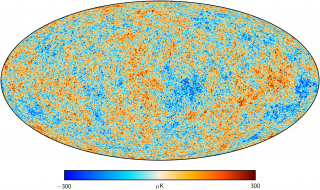Bartlett, James G.; Alonso, David; Remazeilles, Mathieu; Melin, Jean-Baptiste; Basu, Kaustuv; Battaglia, Nicholas; Chluba, Jens; Churazov, Eugene; Delabrouille, Jacques; Erler, Jens; Ferraro, Simone; Hernández-Monteagudo, Carlos; Hill, J. Colin; Hotinli, Selim C.; Khabibullin, Ildar; Madhavacheril, Mathew; Mroczkowski, Tony; Nagai, Daisuke; Raghunathan, Srinivasan; Rubiño Martin, Jose Alberto; Sayers, Jack; Scott, Douglas; Sugiyama, Naonori; Sunyaev, Rashid; Zubeldia, Íñigo
Referencia bibliográfica
Experimental Astronomy
Fecha de publicación:
6
2021
Revista
Número de citas
24
Número de citas referidas
21
Descripción
This Science White Paper, prepared in response to the ESA Voyage 2050 call for long-term mission planning, aims to describe the various science possibilities that can be realized with an L-class space observatory that is dedicated to the study of the interactions of cosmic microwave background (CMB) photons with the cosmic web. Our aim is specifically to use the CMB as a backlight - and survey the gas, total mass, and stellar content of the entire observable Universe by means of analyzing the spatial and spectral distortions imprinted on it. These distortions result from two major processes that impact on CMB photons: scattering by free electrons and atoms (Sunyaev-Zeldovich effect in diverse forms, Rayleigh scattering, resonant scattering) and deflection by gravitational potential (lensing effect). Even though the list of topics collected in this White Paper is not exhaustive, it helps to illustrate the exceptional diversity of major scientific questions that can be addressed by a space mission that will reach an angular resolution of 1.5 arcmin (goal 1 arcmin), have an average sensitivity better than 1 μK-arcmin, and span the microwave frequency range from roughly 50 GHz to 1 THz. The current paper also highlights the synergy of our BACKLIGHT mission concept with several upcoming and proposed ground-based CMB experiments.
Proyectos relacionados

Anisotropía del Fondo Cósmico de Microondas
El objetivo general de este proyecto es determinar y estudiar las variaciones espaciales y espectrales en la temperatura del Fondo Cósmico de Microondas y en su Polarización en un amplio rango de escalas angulares que van desde pocos minutos de arco hasta varios grados. Las fluctuaciones primordiales en la densidad de materia, que dieron origen a
Rafael
Rebolo López